When it comes to houseplants, there are a lot of different options to choose from. If you’re looking for something that’s easy to care for and can thrive indoors- then you should consider getting a dracaena.
Fortunately, we’ve compiled this guide about the types of Dracaena, their benefits, the best potting mix for plants, and how to take perfect care of Dracaena.
Dracaenas are a type of tropical plant that can grow up to 15 feet tall. They’re often used as decorative plants in homes and offices, and they’re known for their ability to purify the air.
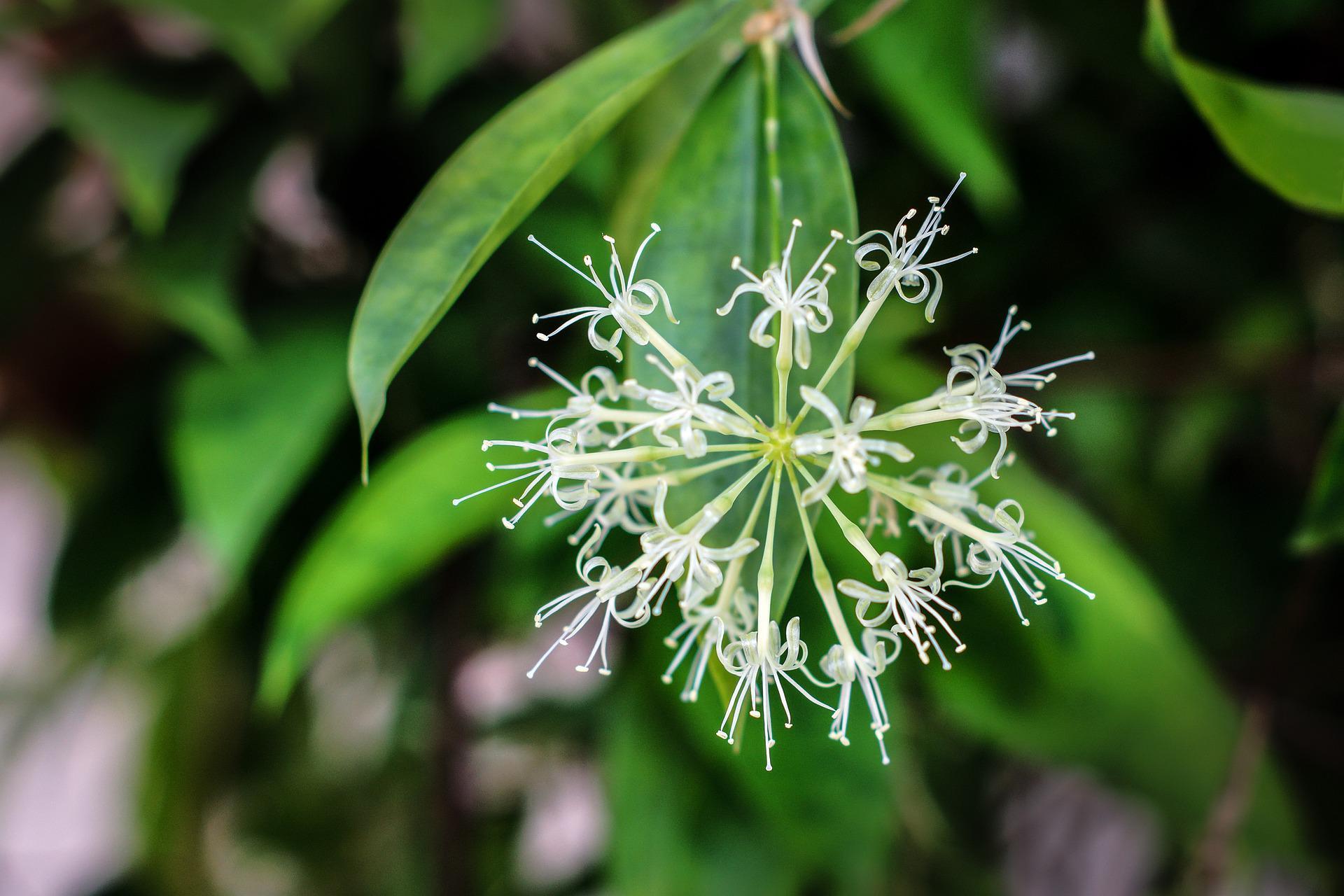
Credit: Pixabay
One of the best things about dracaenas is that they’re very low-maintenance. They don’t require a lot of watering or sunlight, and they’re not susceptible to many pests or diseases. Moreover, always get a pot that’s large enough to accommodate the Dracaena’s roots.
You should also place it in an area that doesn’t get plenty of direct sunlight.
Different Types Of Dracaena Plants
There are many types of dracaena plants, and each one has its own unique features. Some of the most popular types include the following:
1. Dracaena marginata
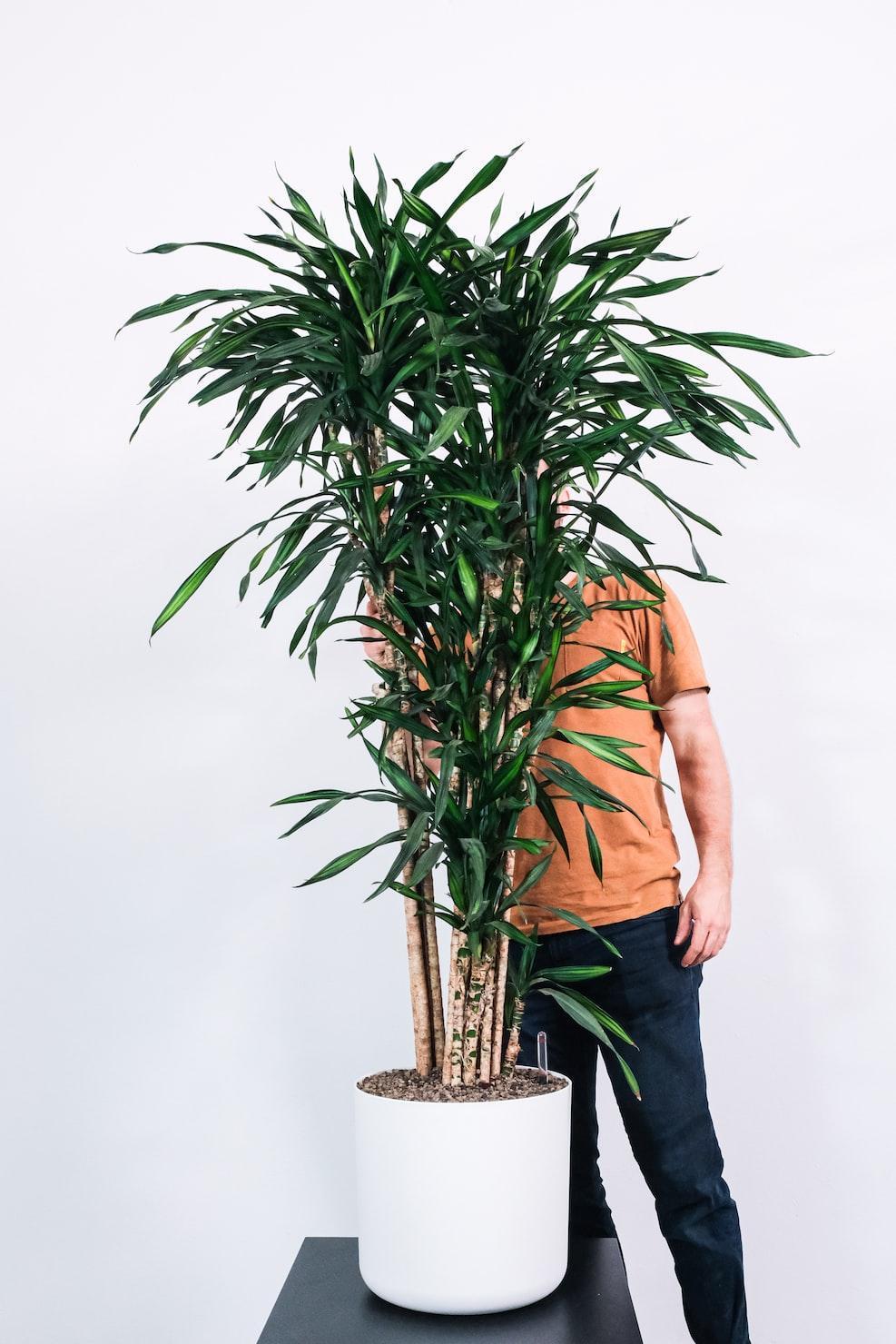
Credit: Unsplash
Dracaena marginata is also known as the Madagascar dragon tree. It is characterized by its long, slender leaves that are edged with red or purple. It can grow up to 15 feet tall and is a popular choice for indoor landscaping.
2. Dracaena deremensis
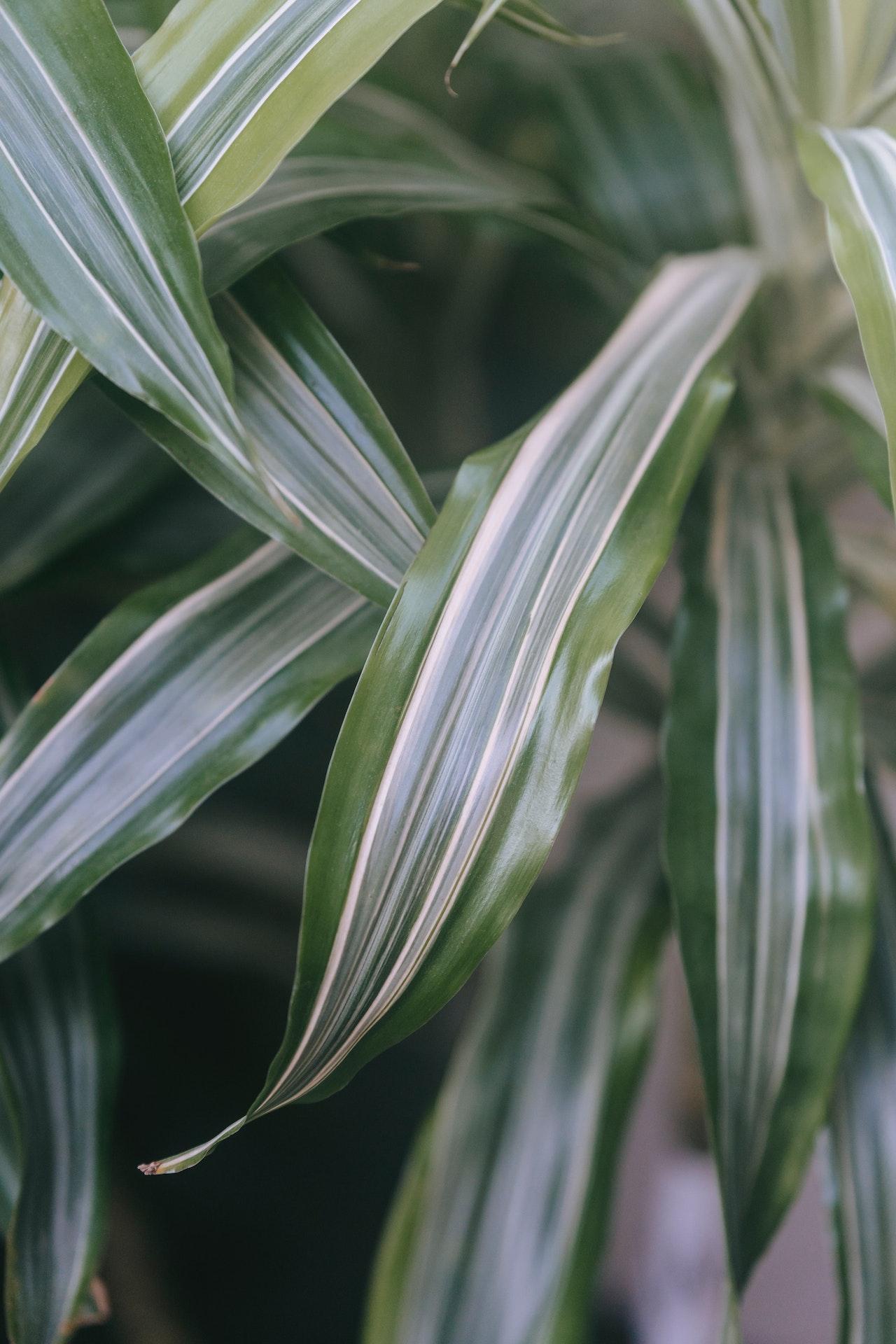
Credit: Pexels
It is also known as the Warneckii dracaena. It is characterized by its long, strap-like leaves that are green with white stripes. Furthermore, it can grow up to 10 feet tall and is a popular choice for indoor landscaping.
3. Dracaena sanderiana
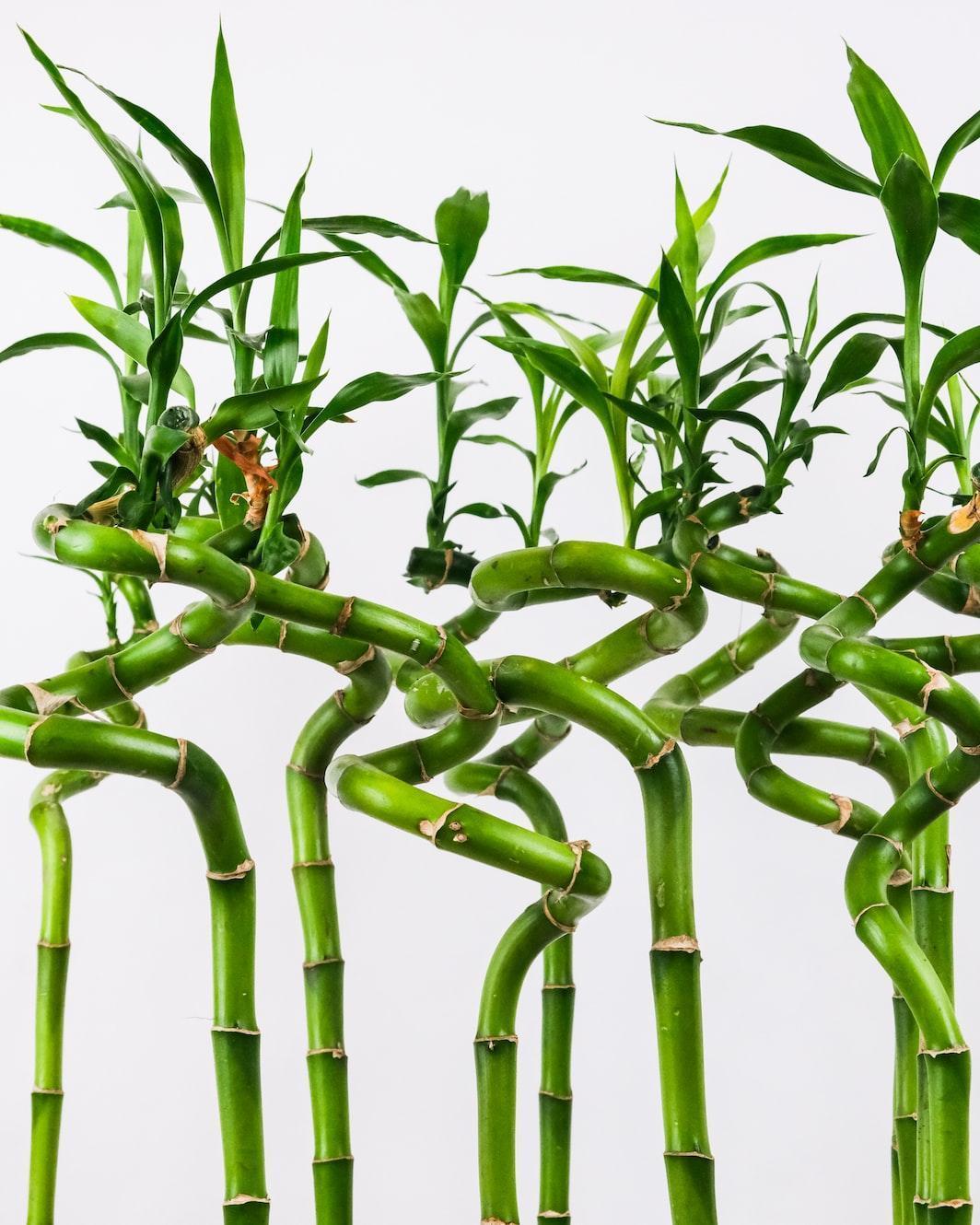
Credit: Unsplash
This type of dracaena is also called the ribbon dracaena. It is characterized by its long, thin leaves that are green with yellow stripes. In addition, it can grow up to 8 feet tall and is a popular choice for indoor landscaping.
4. Dracaena fragrans
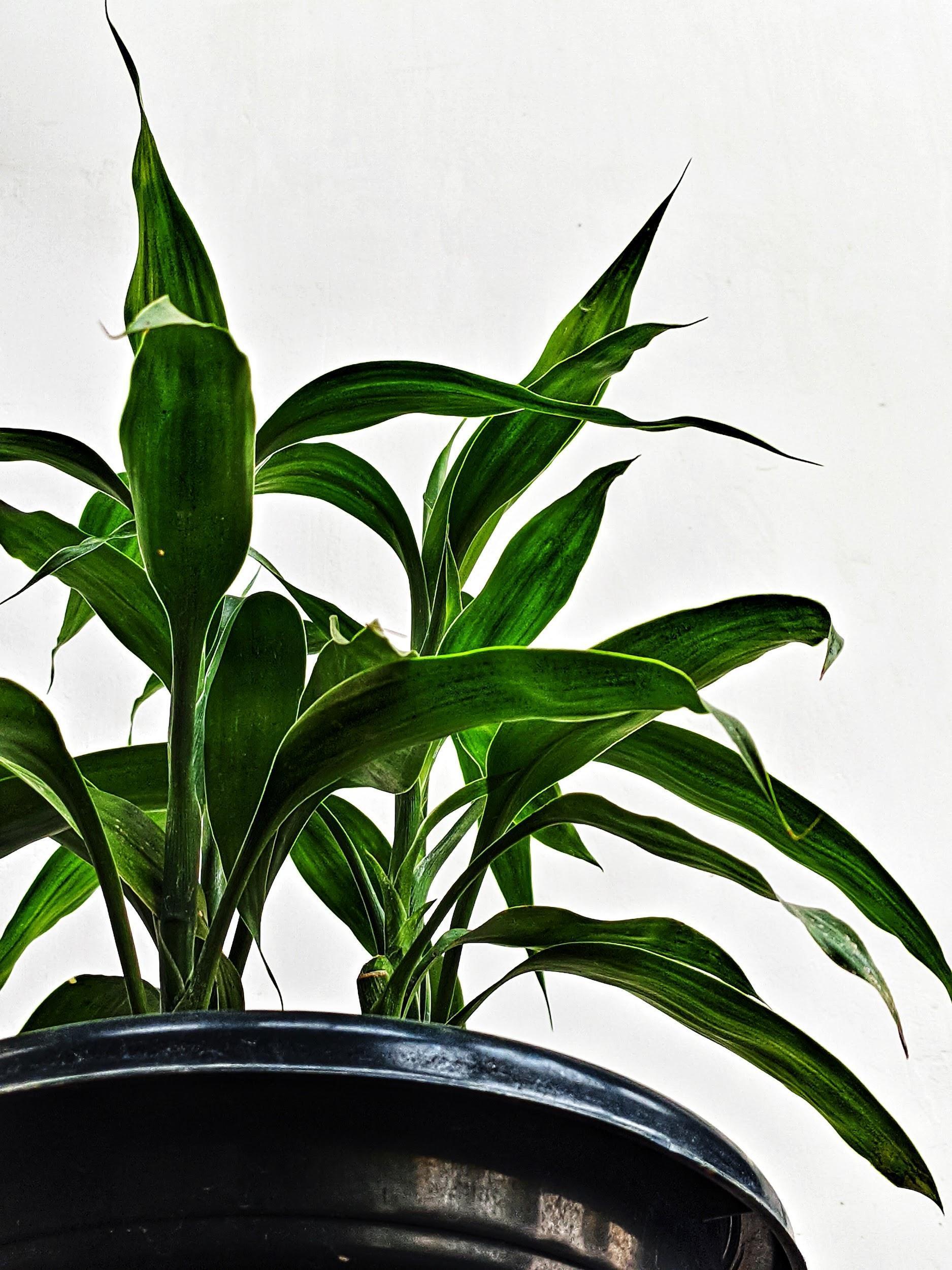
Credit: Unsplash
Dracaena fragrans is called the fragrant dracaena. It is characterized by its long, narrow leaves that are green with white stripes. Also, it grows up to 6 feet tall and is a popular choice for indoor landscaping.
5. Dracaena cincta
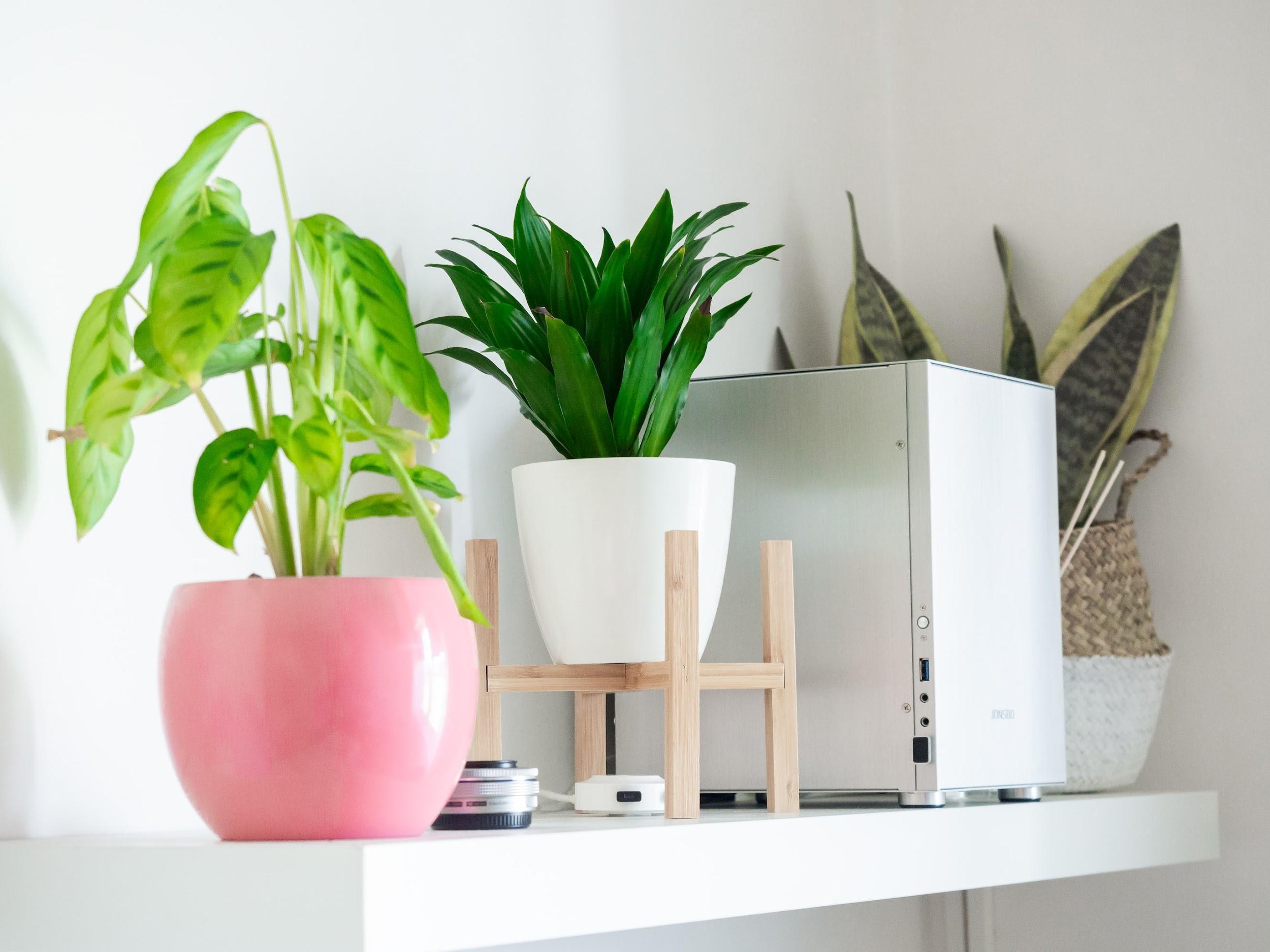
Credit: Unsplash
This type of dracaena is known as the banded dracaena. It is characterized by its long, strap-like leaves that are green with yellow or white stripes. It can grow up to 4 feet tall and is a popular choice for indoor landscaping.
The Benefits Of Dracaena Plants
Dracaena plants are known to have many benefits. Some of these benefits include:
- Dracaena plants can help purify the air in your home.
- It helps to improve your mood and mental well-being.
- The plant usually reduces stress and anxiety levels.
- It can improve concentration and focus when it’s in your space.
- Dracaena plants help to boost your immune system.
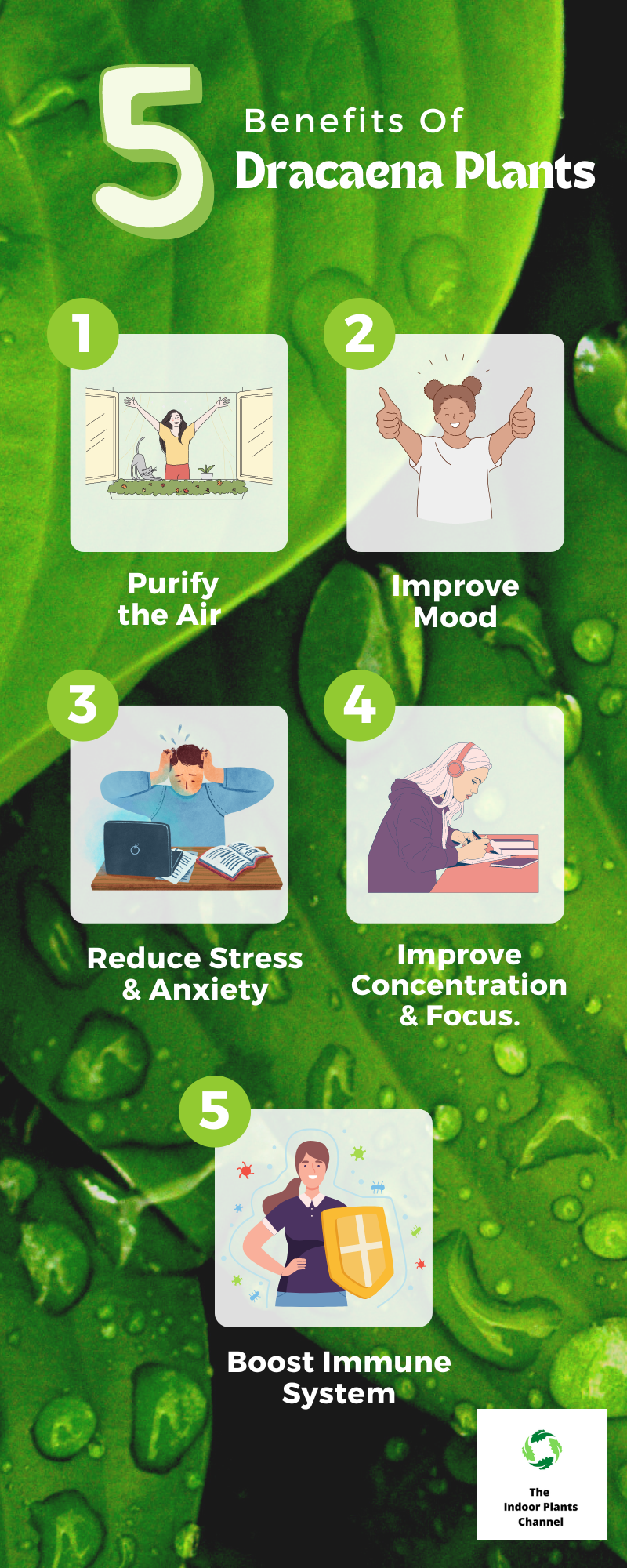
The History Of Dracaena Plants
The dracaena plant is a member of the Asparagaceae family, which includes asparagus, lilies, and agaves. The genus Dracaena includes about 120 species, many of which are native to Africa.
The name dracaena is derived from the Greek word drakaina, meaning “female dragon.” This is likely in reference to the plant’s red sap, which was once used as a dye and was thought to have magical powers.
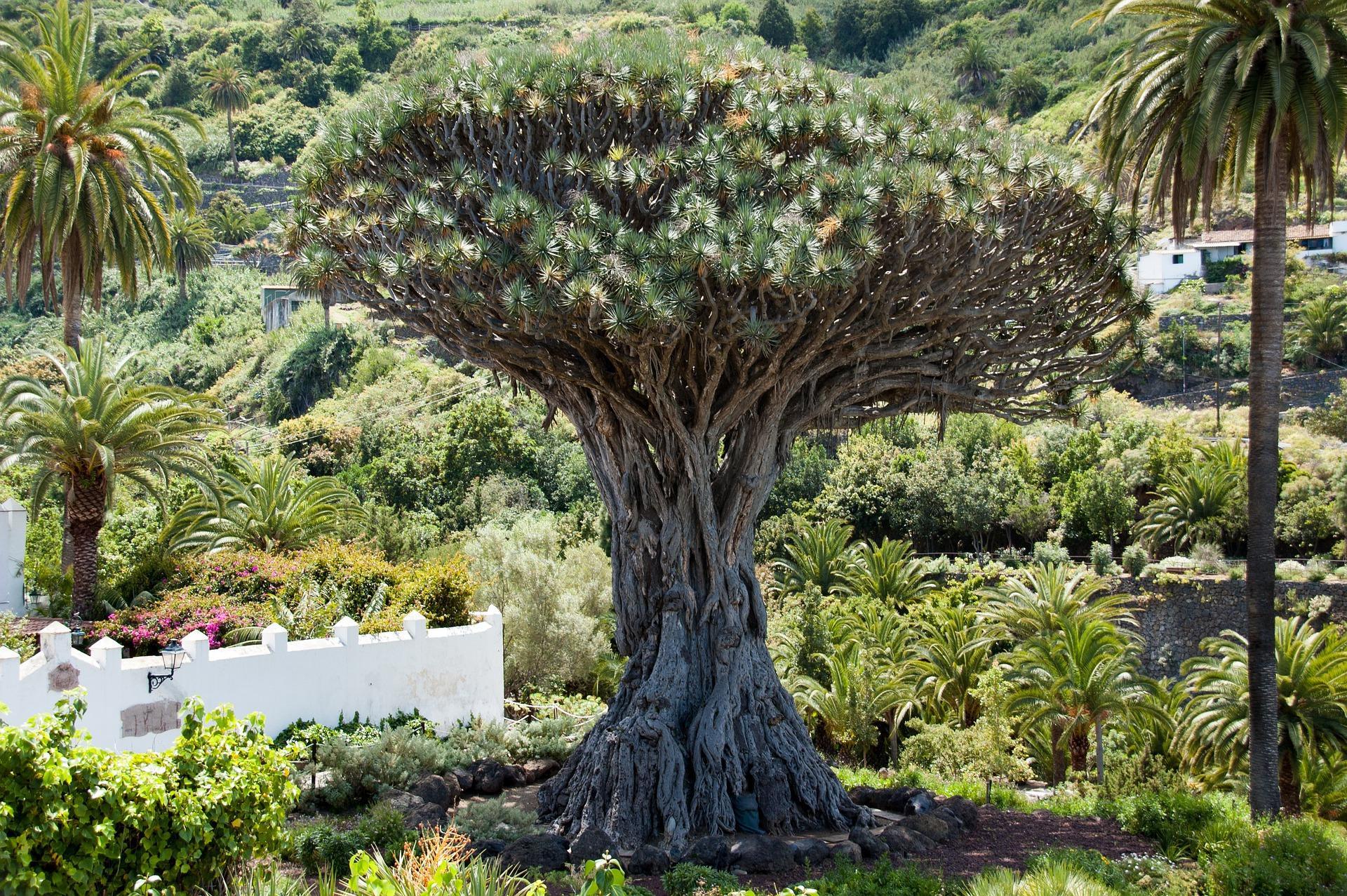
Credit: Pixabay
Dracaena plants have been used for centuries in folk medicine. The sap was used to treat wounds and the leaves were used to make a tea that was thought to be helpful in treating digestive problems.
Today, dracaena plants are popular houseplants. They are easy to care for and can tolerate a wide range of growing conditions.
How To Care For Dracaena Plants
Dracaena plants are one of the most popular houseplants around, and it’s no wonder why! They require low maintenance, they look great, and they can help purify the air in your home. Here are some tips on how to take care of your dracaena plant so it will thrive.
Light
Dracaena plants do best in bright, indirect light. If you can provide them with some filtered sunlight, that’s ideal. But if you can’t, they’ll be fine in a bright room with no direct sunlight. However, be sure to keep them away from any drafts.
Water
The biggest mistake people make when caring for dracaena plants is watering them too often. These plants like to be on the dry side, so only water them when the top inch of soil is dry to the touch. And when you do water them, be sure to use room-temperature water.
Fertilizer
Dracaena plants don’t need a lot of fertilizer, so you can just use a basic all-purpose fertilizer once a month during the spring and summer. Always dilute the fertilizer to reduce the concentration that the package recommends.
Pruning
If you want your dracaena plant to grow to its full potential, you’ll need to prune it occasionally. You can do this by simply cutting off the top few inches of the plant with a sharp knife. Be sure to make the cuts just above a leaf node (where the leaves join the stem).
The Best Soil For Dracaena Plants
There are a few things to keep in mind when it comes to the best soil for dracaena plants.
First, the soil should be well-draining.
- Dracaena plants do not like to sit in wet, soggy soil.
- Mix of peat moss and perlite. The mix will drain well and hold moisture without being too wet.
- Another option is to use a mix of sand and soil. The mix will also drain well and hold moisture without being too wet.
Second, the soil should be rich in organic matter. This will help the plant to get the nutrients it needs to thrive.
- Use compost. This will add nutrients and help the plant to thrive.
- Use manure. It’ll also add nutrients and help the plant to thrive.
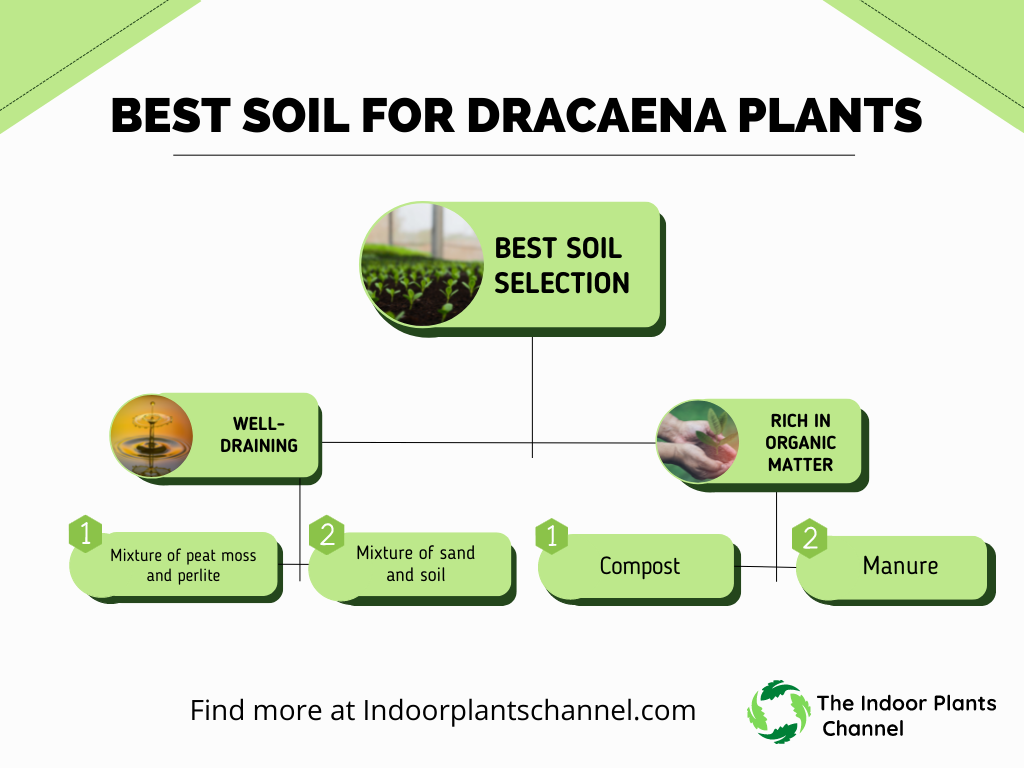
Whichever option you choose, ensure that the soil is well-draining and rich in organic matter.
The Best Potting Mix For Dracaena Plants
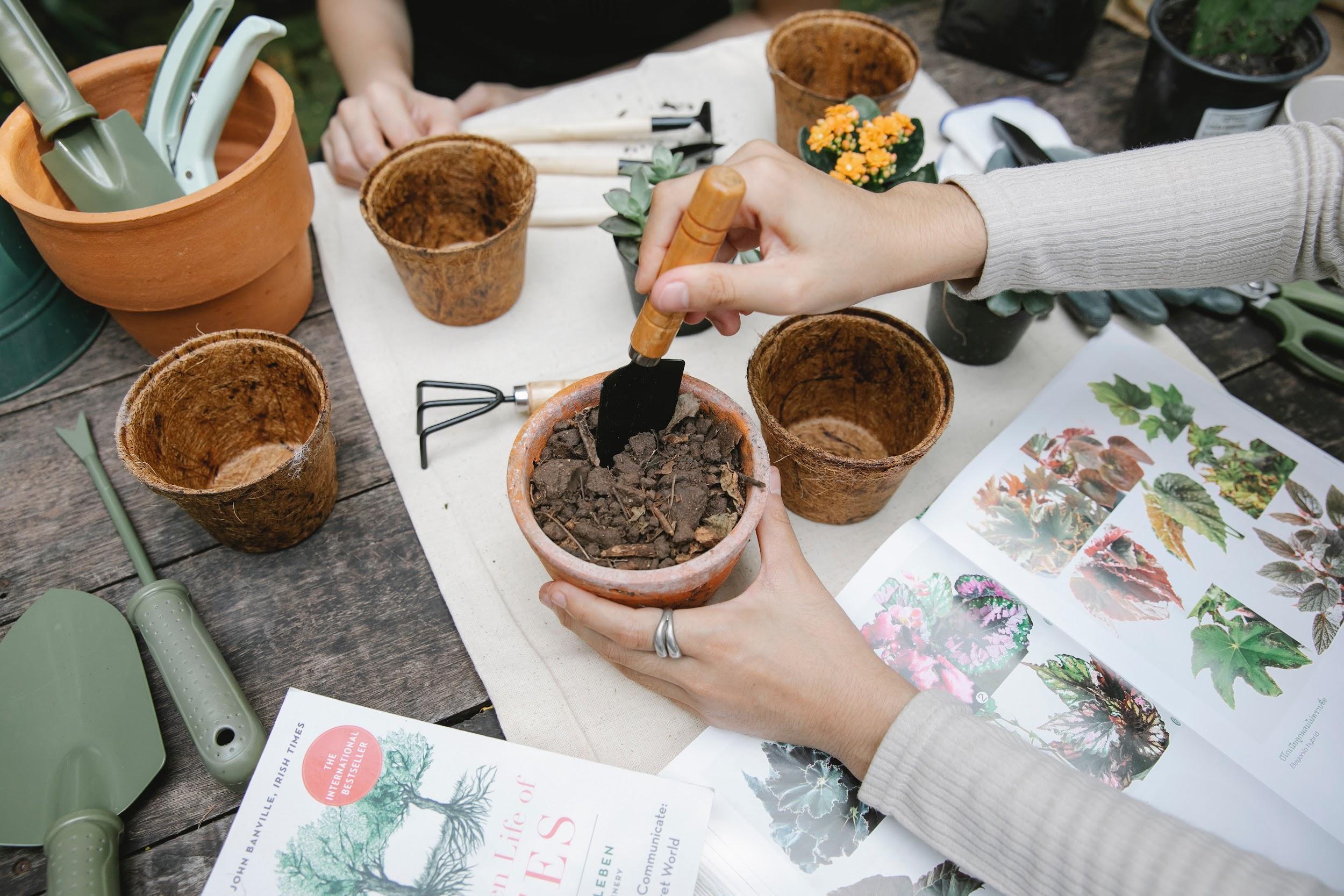
Credit: Pexels
There are a few things to keep in mind when potting or repotting a dracaena plant:
- Use a well-draining potting mix. Dracaenas will not tolerate sitting in water, so make sure your pot has drainage holes and that the potting mix you use drains well.
- A good potting mix for dracaenas should be loose and airy, and contain a mix of organic matter and inorganic matter.
- You can use a commercial potting mix for dracaenas, or make your own mix at home.
- If you are making your own potting mix, a good recipe to start with is two parts peat moss, one part perlite, and one part vermiculite.
- When repotting a dracaena, only move it up one pot size. A pot that is too large will hold too much moisture and can lead to problems with the roots.
The Best Fertilizer For Dracaena Plants
If you want to keep your dracaena plant healthy and looking its best, you need to fertilize it regularly. But what fertilizer should you use?
There are many different types of fertilizer available, and which one you choose will depend on your plant’s needs. A good general-purpose fertilizer for dracaena plants is a balanced 10-10-10 fertilizer, applied according to the package directions.
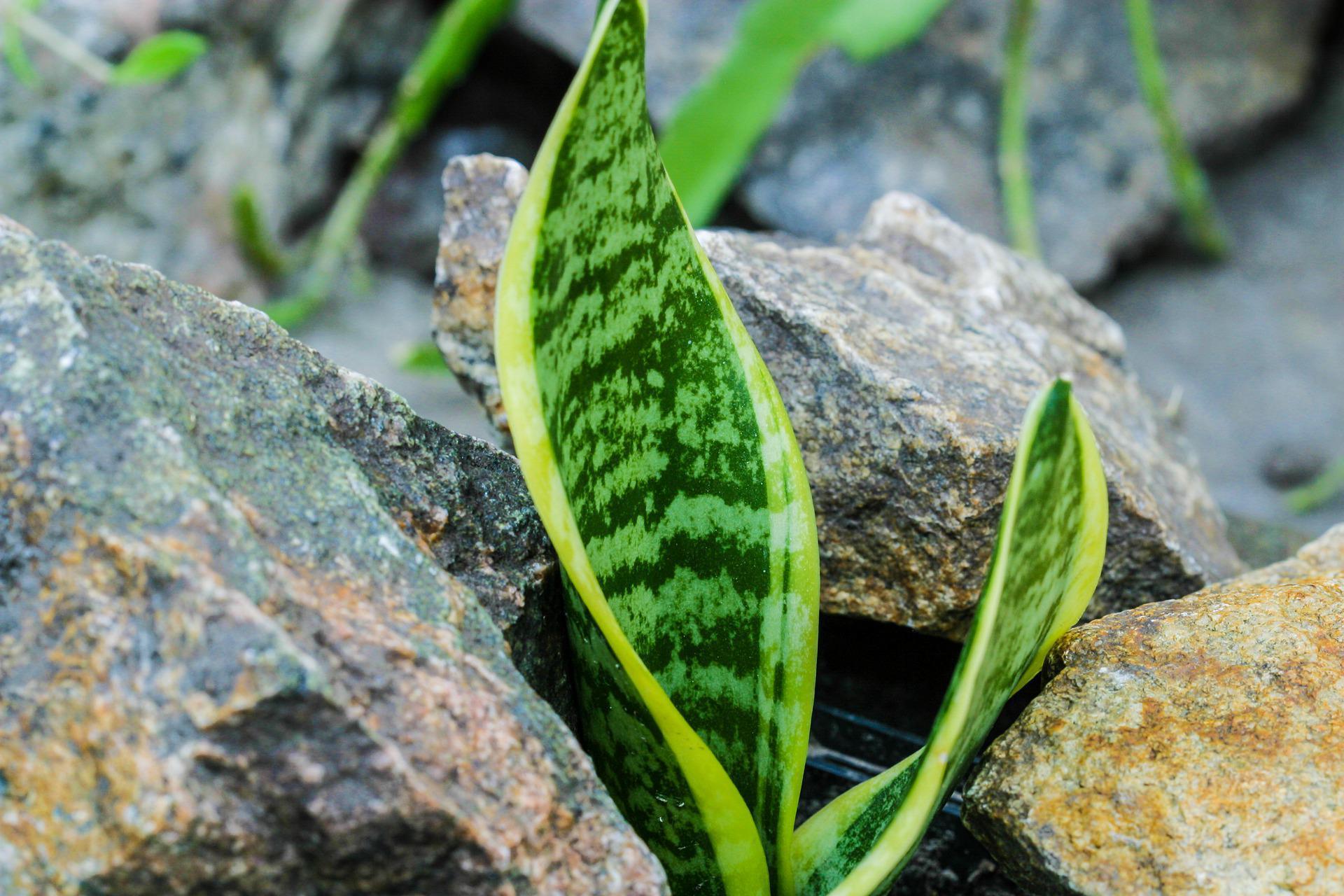
Credit: Pixabay
If your plant is showing signs of nutrient deficiency, such as yellowing leaves, you may need to use a fertilizer with a higher concentration of one or more of the elements. For example, a 14-14-14 fertilizer has a higher concentration of nitrogen, which is needed for leaf growth.
You can also use organic fertilizers, such as compost or manure. These are slower-acting than chemical fertilizers, but they are more gentle on the plant and will provide a long-term source of nutrients.
Whatever fertilizer you choose, be sure to follow the package directions carefully. Over-fertilizing can damage your plant.
How To Propagate Dracaena Plants
Dracaena plants are incredibly easy to propagate. You can propagate them from stem cuttings or from leaf cuttings. The most important thing to remember when propagating is to use a sharp knife or pruning shears when taking your cuttings. It’ll help to prevent the plant from infection or rot.
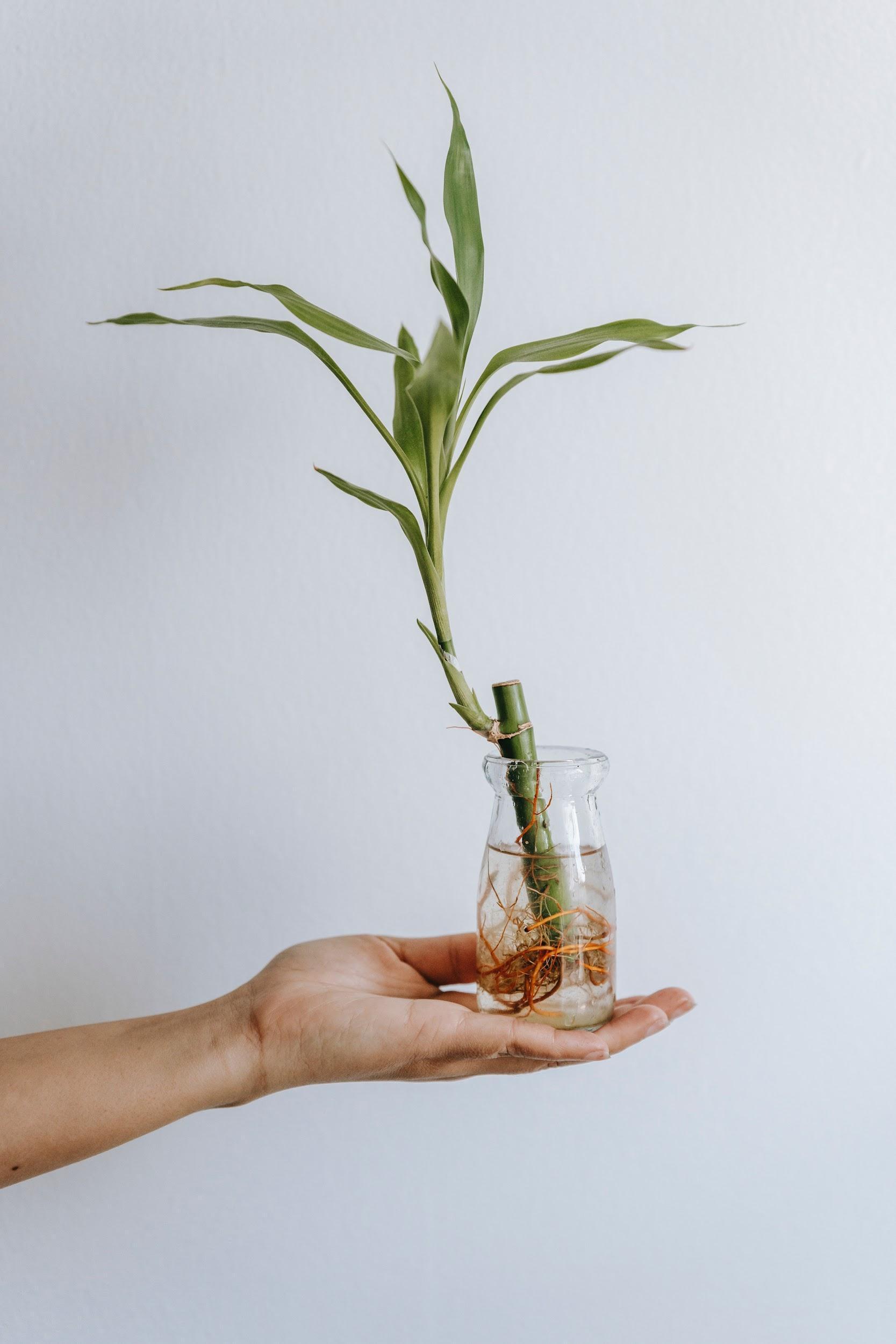
Credit: Pexels
To propagate from stem cuttings,
- Simply cut a 6-8 inch section of stem from the mother plant.
- Make sure that there are a few leaves still attached to the stem.
- Remove any leaves that are below the cut. Dip the cut end of the stem in rooting hormone and plant in a pot filled with a well-draining potting mix.
- Water the soil and keep it moist but not soggy.
- Place the pot in a warm, sunny spot and within a few weeks, you should see new growth.
To propagate from leaf cuttings,
- Cut a leaf from the mother plant, making sure to include a bit of the stem.
- Dip the cut end of the stem in rooting hormone and plant in a pot filled with a well-draining potting mix.
- Water the soil and keep it moist but not soggy.
- Place the pot in a warm, sunny spot and within a few weeks, you should see new growth.
How To Troubleshoot Common Dracaena Problems
When your dracaena loses leaves, it could be due to too much direct sunlight or too little water.
- For yellowish leaves, it could be too much water or too little light.
- When the leaves are brown and dry, it could be due to too little water or too much direct sunlight.
- If your dracaena is not growing, it could be due to too little light or too much water.
- If the leaves are wilting, it could be due to too little water.
To troubleshoot these problems, check the amount of light and water your dracaena is getting. Adjust accordingly, in case it’s inadequate or in excess. Moreover, you should consult a professional, if it persists.
Frequently Asked Questions about Dracaena
What is a dracaena?
A dracaena is a type of flowering plant that is native to the tropical regions of Africa, Madagascar, and southern Asia. The plants can grow up to 20 feet tall and have long, narrow leaves that are often variegated or striped.
How do you care for a dracaena?
Dracaenas are relatively easy to care for, and can tolerate a wide range of growing conditions. They prefer bright, indirect light but can also tolerate low light levels. Always water it when the soil is dry and fertilize monthly during the growing season.
What are some common problems with dracaenas?
One common problem with dracaenas is browning or yellowing leaves, which can be caused by too much or too little water, a fertilizer that is too high in nitrogen, or direct sunlight. If the leaves are wilting, it is usually a sign of overwatering. Spider mites, mealybugs, and scale can also be problematic for dracaenas.
Bonus Tips
- Create a living wall by attaching dracaena plants to a trellis or other support.
- Hang dracaena plants from the ceiling for a dramatic look.
- Line a windowsill or other sunny spot with dracaena plants.
- Group dracaena plants together for a lush, tropical feel.
- Place a dracaena plant in a large, decorative pot.
- Use dracaena plants as accent pieces in a room or outdoor space.
- Dracaena plants are especially susceptible to root rot, so it is important to make sure that you keep the soil moist but not soggy.
Conclusion
Dracaena plants are one of the best low-maintenance and beautiful indoor plants you can use. It has numerous benefits and types which give you the chance to choose. Likewise, its history is interesting and unique- thus, setting it apart. I hope you enjoyed our ultimate guide for Dracaena plants and all you should know about the plant and its growth. Please share your thoughts in the comments below.
Michelle Wilde
Related posts
5 Comments
Leave a Reply Cancel reply
![]()
About Michelle Wilde
Michelle Wilde is a stay-at-home mom and avid plant lover. Armed with a post-graduate degree in Computer Science (no kidding!), she loves researching plants and landscapes. When she is not caring for her 4 kids, she spends time on her passion for plants. She blogs at www.indoorplantschannel.com, the trusted source for indoor plants.
Learn more
Subscribe
* You will receive the latest posts and updates about indoor plants!
Search
Recent Posts
Categories
- Beginner Guides (10)
- FAQ (206)
- General (2)
- How-To Guides (212)
- Indoor Plants (214)
- Pest Management (2)
- Plant Problem Solutions (4)
- Seasonal Growing (2)
- Specialized Environments (2)
- Specific Plant Care (3)
- Technical Growing (2)
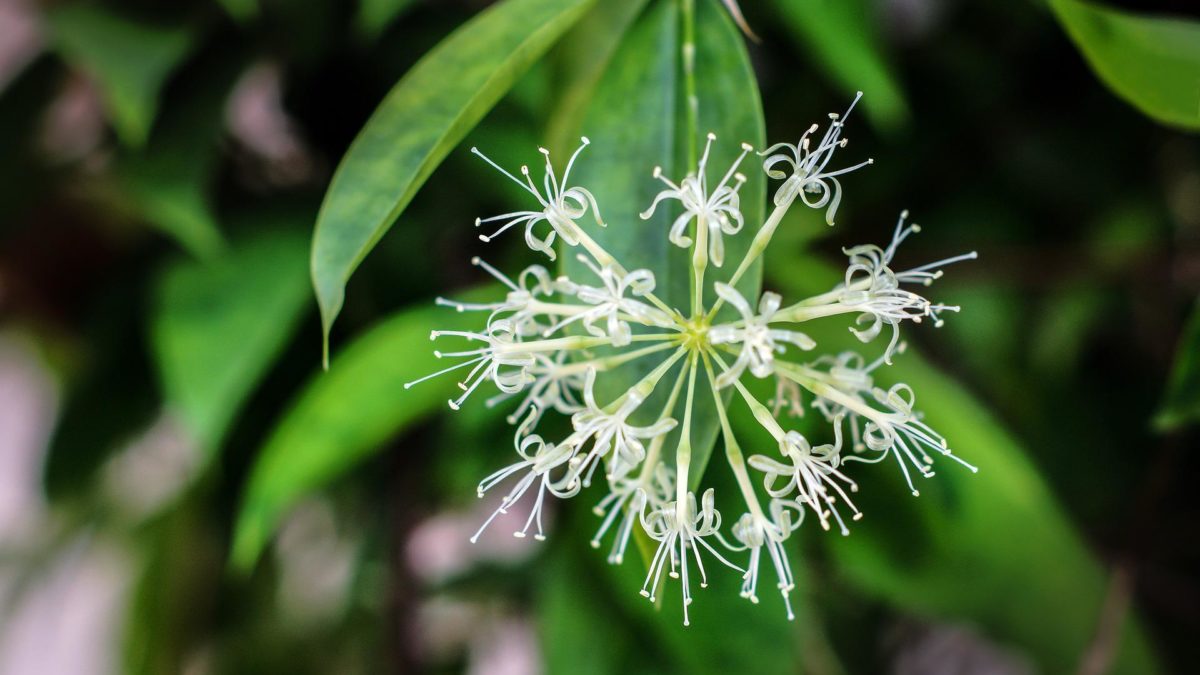
[…] for an easy-to-care-for indoor plant? Meet the Dracaena Fragrans, otherwise known as the Corn Plant. This hardy plant can thrive in a range of indoor conditions, […]
[…] Dracaena plants are also common in homes and scale can be a problem for them as well. Again, regular inspection and treatment are key to keeping your dracaena healthy. […]
[…] a houseplant because it is very easy to care for and can thrive in almost any type of environment. Dracaena plants have long, narrow leaves that are often used as a decoration in homes and […]
[…] Dracaena is perfect for people who want a plant that is both easy to care for and beautiful. These plants come in a wide variety of colors and can tolerate a wide range of indoor environments. They are also very easy to care for, as they don’t require much water or sunlight. […]
[…] minimal attention and can thrive with minimal watering and fertilization. With proper care, your dracaena plant can be a long-lasting, low-maintenance addition to your […]